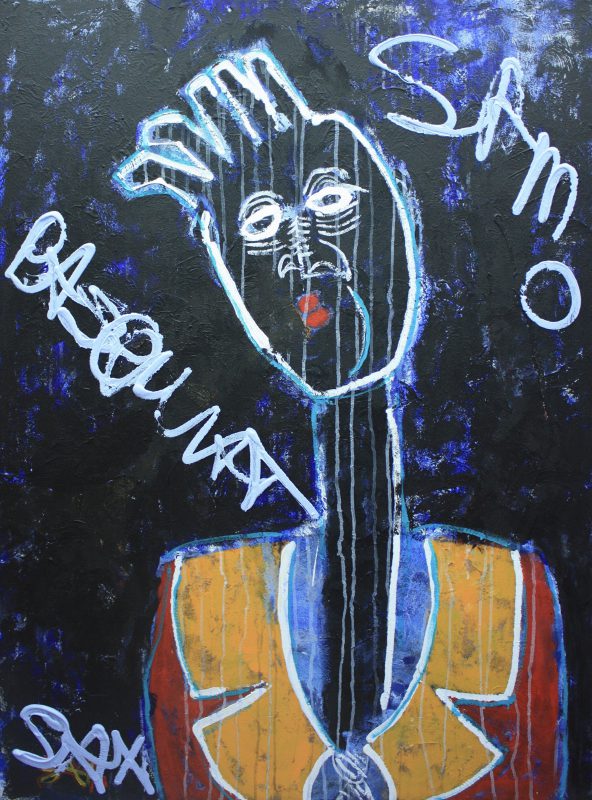The Road to 21st Century Neo-Expressionism
New York in the 1980’s a place to be free, a place to be creative, a place to be outrageous, a place to be equal, a place to be accepted. Perhaps the world’s most iconic city in the most iconic of times. Possibilities were endless, everything was possible.
A chance encounter with a famous face at a downtown nightclub. Boozy parties that lasted until dawn. A midnight walk across the Williamsburg Bridge. From Downtown to Brooklyn to Queens to the East Village to TriBeCa they came, from all over the U.S and beyond, a chorus of creative voices formed a compelling mosaic, revealing a city bustling with creativity but also slowly emerging from its recent near-bankruptcy, with upscale restaurants just blocks away from rubble-filled, graffiti-painted lots. Whether you were struggling, successful or just plain lucky, New York City — dirty, dangerous, derelict, dazzling — was the only place to be. This was the New York of Taxi-Driver.
The city was a magnet drawing to her an eclectic mix of characters that fuelled an explosion of creativity; fashion designers, writers, activists, photographers, musicians, performers, and most importantly artists. Atmospherically charged almost Gothic in appeal these talents stalked the city living on the edge of acceptability and reveling in their powers. Andy Warhol, Keith Haring, Jean-Michel Basquiat, even the art school student Ai Weiwei were familiar figures on the streets.
Pulled into this powerful creative vortex was a young British artist, musician & writer from the north of England – Sax Berlin. Hustling by day as a bicycle courier, turning it into a sport & stopping to watch street performers along his route. Going to smoky jazz clubs & painting at night Berlin was imbibing the frenetic energy of the city with every breath; the long form “Manhattan” series was born of speed and the night. Like a sponge he absorbed what he saw; the birth of rap & break dancing, but particularly the street art of Jean-Michel Basquiat and Keith Haring. Sketching the streets alongside them. Berlin knew that he had a place as one of these young masters of neo-expressionism who were bringing their art to the masses. No longer was the rarefied air of the galleries and museums the only place to view art. Berlin watched Keith Haring creating his political pieces in chalk on blank advertising posters in the Subway stations, Andy Warhol photographing him, he saw the frustration of the police as after hauling him away in handcuffs they discovered there was no crime. In fact many of the officers were fans of Haring & were delighted to meet him! There was a time where Berlin visited Haring and found the whole apartment covered in Haring’s little people, even on the door jambs!
Activism also pervaded this neo-expressionist movement; the 1980’s saw so many issues bubble above ground, not least freedom of speech, racism and shockingly the start of the AIDS crisis. Deeply affected the vanguard of these “radical” artists made their art cry out to raise awareness. Basquiat with his SAMO (same old shit) pieces and Haring, devastated by the loss of their friends & lovers using their street style to try to show what was happening. Basquiat & SAMO also deeply impacted directly on Berlin; the thrill of stumbling across a new piece of graffito was immense. He actively sought out new appearances in the small hours of the night.
Berlins portrait of “Basquiat” shows the street artist in a paint spattered Armani suit and in another, “SAMO in Shades” wearing sunglasses. But Berlin is also a deeply compassionate man with a social conscience leading him to make comment through art; “Stamp Out Racism – We All From Africa”, “SAMO: Free Speech”, “No King” are eloquent statements. The” Dollar Angel” is a sardonic piece looking at the state of humanity in the first two decades of the 21st Century, it is bold & fearless.
But ten years of night hawking around the city had taken its toll on his health so Berlin pulled back, broke away from the street scene and returned to England, settling in Cornwall with all its resident artist communities. Here he created a shock-wave and found immediate success, being encouraged to set up his own order. He sold many pieces of his work. Then his health broke, struck down with a devastating attack of shingles artistic life had to be put on pause. Always a fighter Berlin recovered and studied. He mastered different styles that are all unique to him and is now seeing a resurgence in his works that are held in private collections on both sides of the Atlantic.
However through many different phases of style Berlin has come full circle and is now re-invigorated and painting in his very own 21st Century Neo-Expressionist style. Berlin has revived his innate love of jazz music and pays homage to the greats in a whole new series, “Jazz Kats”. Where his 1980’s contemporaries burned out and died young he rose again. These new works show once more the immediacy and social commentary of street art and populism. There are plans afoot for his return to NYC in Spring 2019 with a team to once more create art on the streets and reform the brotherhood of the street.

